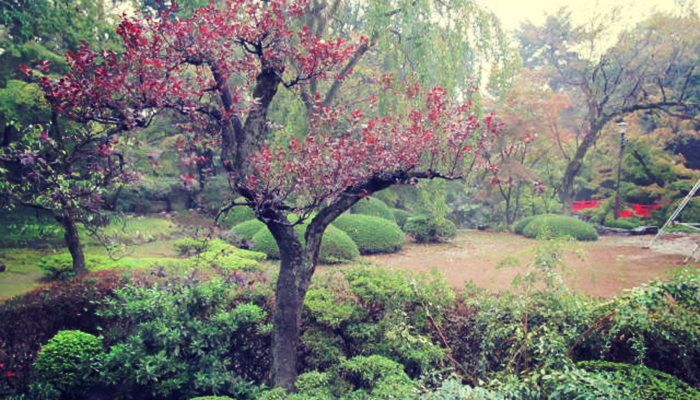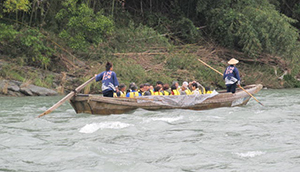
Tokyo likely sits on top of your travel bucket list, but you’d be remiss to limit your Japan travels to the one city. When you visit Tokyo, give yourself time for a day trip to explore the other facets of Japan—after all, the island is made up of 47 prefectures, each with its own slew of offerings. Here are our choice picks for nearby getaways:
For Foodies: Narita, Chiba Prefecture
You likely flew into Narita International Airport, and you’ll want to make time to check out its surrounding area, namely Omotesando Road. Lined with markets, Eastern medicine shops and restaurants, this narrow strip seems worlds away from the busy airport. As you pass an open-air storefront, witness the deft butchers who methodically pin down live eels, debone and prep them for neighboring restaurants to grill up. If you’re too squeamish to watch, go across the street to Kikuya (or “Chrysanthemum House”) to try the end product. The more than 270-year-old restaurant serves the surprisingly sweet barbecued eel, a regional specialty, atop a bed of rice. Eel is the dish to get here, though you can also make it a multicourse meal with monkfish liver that tastes like foie gras, super-fresh tuna sashimi and a cafe latte pudding—which has the same consistency of panna cotta—crowned with whipped cream and a goji berry.
Afterward, peruse the stores along Omotesando. Pick up items like fruit honey (we loved the mango flavor), which you can add to gin or vodka for a cocktail or use as a topping on pancakes or ice cream, and sake (Chiba’s sweet, pure water makes it a spot for producing the alcoholic beverage). For the latter, stop by Takizawa Honten, which has a nearly 150-year-old onsite brewery making sake under the label Chomeisen. In front of the store, you’ll see a small barrel with a spout. Follow the locals and grab an empty nearby bottle and pour sake from the barrel, and buy some hard candies made from sake kasu, a byproduct of the sake-making process.
For Outdoor Enthusiasts: Nagatoro, Saitama Prefecture
Board a Japanese river boat—which looks like a large gondola—and two paddlers using long bamboo sticks as oars will guide you through the Arakawa River. Don’t expect a heart-racing ride; although there are rapids, the only danger you’ll face is some splashes. But it’s worth it to see the rocky edges of the valley and small gushing waterfalls. Ask your paddler to point out Nagatoro Iwadatami, a grouping of rocks that’s more than 260 feet wide and 1,640 feet long and resembles a laid-out tatami mat. After disembarking, stroll around the area. In a pedestrian-only corridor, you’ll find shops selling pickled shiitakes, soba noodles, large rice crackers with soy sauce for dipping and manjyu-an, addictive doughy dumplings filled with red bean paste.
Try timing a visit for the Nagatoro Funadama Matsuri, a boat lantern festival that falls on August 15 every year. During the summertime event, the river is illuminated with floating lanterns and decorated boats that are piled high with glowing lanterns. In the fall, add nearby Tsukinoishi Momiji Park to your itinerary. There, you can see the vibrant yellow, red and orange leaves of the striking momiji, Japanese maple trees, lit up.
For Explorers: Nokogiri-yama and Nihon-ji Temple, Chiba Prefecture
You’ll want a full day to take in Nokogiri-yama. Sitting on the west coast of the Boso Peninsula, it affords beautiful views of Tokyo Bay, Mount Fuji and Kanto (the region of Honshu, Japan’s largest island, that encompasses Tokyo). For an added vista, take the cable car up to the steep hills. After snapping a bunch of photos, hike your way back down, as there are numerous trails to follow. Whichever path you choose, you’ll encounter some of the 1,500-plus stone sculptures of arhats (Buddhists who have achieved enlightenment). The sculptures come in all shapes and sizes; pencil in extra time to get a close-up look at their distinct, expressive faces. There’s one statue on the grounds that will trump all of those—the impressive 102-foot-tall open-air Buddha, which is one of the largest in Japan.
For History Buffs: Kawagoe, Saitama Prefecture
Kawagoe is what you imagine ancient Japan looked like. It’s dubbed “Little Edo,” because it still has Japanese-style warehouses with tiled roofs from the Edo period (Tokyo was known as Edo prior to 1868). Walk around to see the historic buildings, which house everything from the local post office to knife shops. Don’t miss a detour down the charming cobblestone Candy Lane (also called Confectionery Row) for delectable sweets such as grilled mochi on skewers and kaiyaki, fish-shaped waffles with fillings like a thick sweet potato jam (the vegetable is a local specialty). Make a pit stop at Vanitoy Bagel for a savory green tea bagel (in an appropriately light green hue) and continue to carbo-load at Bakery Raku Raku with all-natural handmade loaves that have everything from sweet potato to persimmons.
For a more substantial meal, stop into Koedo Kurari, a former sake brewery that was converted to a restaurant, art space and market. For lunch, order delicious soba and a cold Coedo beer (the company is headquartered in Kawagoe).
For one last history lesson, head to Kitain Temple. Its buildings actually came from Shogun Iemitsu’s Edo Castle. Be sure to explore the well-manicured grounds and the 540 statues representing Buddha’s disciples—no two are the same.
Photos Courtesy of Jennifer Kester


